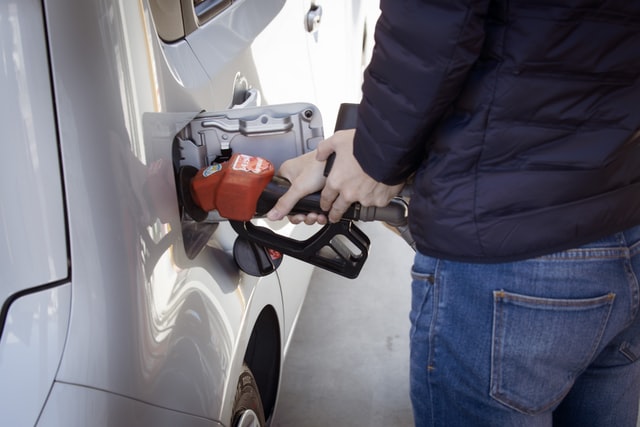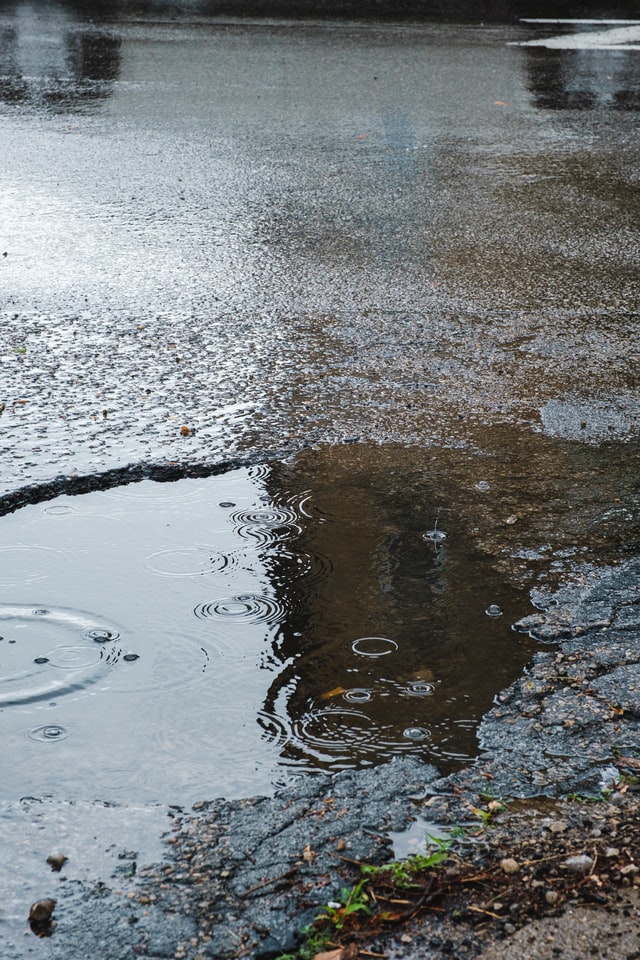Georgia, Inland Waterways, National Category
Startup Uses Drone for Cleaning Water, Collecting Data


America’s roads are critical for moving an ever-increasing number of people and goods. However, these vital lifelines are frequently underfunded, and over 40% of the system is now in poor or mediocre condition. As the backlog of rehabilitation needs grows, motorists are forced to pay over $1,000 every year in wasted time and fuel. Additionally, while traffic fatalities have been on the decline, over 36,000 people are still dying on the nation’s roads every year, and the number of pedestrian fatalities is on the rise. Federal, state, and local governments will need to prioritize strategic investments dedicated to improving and preserving roadway conditions that increase public safety on the system we have in place, as well as plan for the roadways of the future, which will need to account for connected and autonomous vehicles.
Download Report15% to more than 17% over the last decade.
nearly $17 trillion, of the nation’s goods;
are in poor or mediocre condition.
There are over 4 million miles of public roadways in the United States carrying people and goods to their destinations every day. However, these roadways are expected to withstand an ever-increasing volume of traffic each year, with vehicle miles traveled reaching more than 3.2 trillion in 2019, an 18% increase from 2000. Unfortunately, the growing wear and tear to our nation’s roads has left 43% of our public roadways in poor or mediocre condition, a number that has remained stagnant over the past several years. Of note, the vast majority of roads in poor and mediocre conditions tend to be on urban and rural collectors and the non-interstate system, while the interstate system tends to be in good condition. Overall, our deteriorating roads are forcing the nation’s motorists to spend nearly $130 billion each year on extra vehicle repairs and operating costs. Even more troubling is that the number of vehicle miles traveled on roads in “poor” condition has risen from 15% to more than 17% over the last decade.
Source: Data from TRIP, a National Transportation Research Nonprofit
The U.S. has been underfunding its roadway system for years, resulting in a $786 billion backlog of road and bridge capital needs. The bulk of the backlog ($435 billion) is in repairing existing roads, while $125 billion is needed for bridge repair, $120 billion for system expansion, and $105 billion for system enhancement (which includes safety enhancements, operational improvements, and environmental projects). However, in 2017, federal, state, and local governments spent $177 billion on roads and bridges, with an increasing focus on operations and maintenance needs.

While traffic fatalities increased annually in the early part of the last decade, they have been declining since 2017. Unfortunately, 36,096 people died on the nation’s roadways in 2019, with an increasing proportion of those fatalities suffered by non-motorists, such as pedestrians. In fact, in 2019 over 6,000 pedestrians were killed, marking a 60% increase of pedestrian fatalities from 10 years prior and the highest number since 1988.
The increase in severe weather events is damaging key roadways that serve as community lifelines, while simultaneously increasing maintenance needs, interrupting the normal operation of the nation’s roads, creating delays, and negatively impacting the economy. For example, rising temperatures are estimated to add approximately $19 billion to pavement costs each year by 2040. Therefore, engineers are increasingly incorporating the resilience of the road network during the materials selection and design process and using data-driven analysis to make investments. Furthermore, the Federal Highway Administration now requires state transportation departments and planning organizations (DOTs and MPOs) to consider resilience in the planning process and include resilience considerations in asset management plans.

Timely, preventive maintenance of our roads with better materials extends the life of pavement and costs less than reconstructing pavements after they reach failure. The increased use of innovative materials to preserve and rebuild pavements that are better suited to today’s vehicle loading and more resilient to environmental impacts has led to longer-lasting pavements and lower life cycle costs. However, material innovations in pavements have not kept pace with other areas of infrastructure, such as bridge construction.
Advancements in technology have created opportunities for the nation’s road networks. Technologies like advanced pavement monitoring, where the use of moisture and temperature sensors are embedded in the pavement, have made it possible to collect information about the condition of road pavements more quickly and with less impact on roadway users. The advent of smart pavement is opening up the possibility for features like radio-connected sensors being embedded in a road to constantly monitor and report the pavement’s changing condition or to charge electric cars as they drive along, thus reducing the need for off-road recharging stops. Additionally, the use of next-generation materials and decentralized traffic lights to promote traffic flow are innovative solutions for issues like congestion data collection. Meanwhile, the increased focus on how to efficiently integrate bicycle and pedestrian traffic is creating longer-term congestion solutions in urban areas.
Furthermore, one of the largest technological shifts is the introduction of connected and autonomous vehicles onto the nation’s roadways. While these new technologies can provide an opportunity to increase safety and mobility, reduce congestion, improve land use, and reduce our carbon footprint if implemented incorrectly, autonomous vehicles in particular could have the opposite effect and lead to extra stress on the system. With 40 states having enacted either legislation or an Executive Order related to autonomous vehicles, policies are already accounting for the deployment of these technologies on our nation’s roads.
Focus resources on preserving a state of good repair as the nation will never be able to fully build its way out of congestion. Policies and efforts focused on improving travel time reliability will need to be implemented to maximize the capacity of the existing road network. This should be done in coordination with the acceleration of the development and deployment of new technologies that promote an integrated, multimodal transportation system.
Increase funding from all levels of government and the private sector to address the condition and operations of the roadway system to maintain a state of good repair and ensure safety for all users.
Fix the federal Highway Trust Fund by raising the federal motor fuels tax by five cents each year over five years. To ensure long-term, sustainable funding for the federal surface transportation program, the current user fee of 18.4 cents per gallon on gasoline and 24.4 cents per gallon on diesel should be tied to inflation to restore its purchasing power, fill the funding deficit, and ensure reliable funding for the future.
Develop state and local level comprehensive transportation asset management plans that link asset management efforts to long-term transportation planning and incorporate the use of life-cycle cost analysis.
Create dedicated federal investments to build resilience into the nation’s road and bridge infrastructure and integrate resilience planning into State Transportation Asset Management Plans.
The “ride quality” of highways and roadways is typically evaluated using the International Roughness Index (IRI), and the Federal Highway Administration (FHWA) data are the only national source of pavement condition ratings based on a consistent criterion. Using this information, TRIP categorizes the condition of a region’s roads and highways into poor, mediocre, fair, or good condition. The FHWA has found that a road surface with an IRI rating below 95 provides a good ride quality, a road with an IRI from 95 to 170 provides an acceptable ride quality, and a road with an IRI above 170 provides an unacceptable ride quality.
U.S. Department of Transportation, Bureau of Transportation Statistics, “U.S. Vehicle-Miles.”
TRIP, “Key Facts About the U.S. Surface Transportation System,” April 2020.
TRIP, “Bumpy Road Ahead: America’s Roughest Rides and Strategies to Make Our Roads Smoother,” October 2018.
U.S. Department of Transportation, Federal Highway Administration, “Status of the Nation’s Highways, Bridges, and Transit Conditions and Performance Report,” 23rd Edition.
TRIP, “Restoring the Interstate Highway System,” July 2020.
Texas A&M Transportation Institute, “2019 Urban Mobility Report,” August 2019.
7 Transportation Research Board, “The Effect of Transportation Network Companies (TNCs) on Congestion in San Francisco.”
8 National Governors Association, “Ahead of the Curve: A Policy Roadmap for States.”
9 Texas A&M Transportation Institute, “2019 Urban Mobility Report,” 2019.
10 TRIP, “Restoring the Interstate Highway System Report,” July 2020.
11 Texas Transportation Institute.
12 American Society of Civil Engineers, “Failure to Act: Current Investment Trends in Our Surface Transportation Infrastructure: Preliminary Findings,” 2020.
13 Governors Highway Safety Association, “New Projection: 2019 Pedestrian Fatalities Highest Since 1988,” Press Release, February 27, 2020.
14 Insurance Institute for Highway Safety, Highway Loss Data Institute, “Lane Departure Warning, Blind Spot Detection Help Drivers Avoid Trouble,” August 23, 2017.
15 U.S. Department of Transportation, Federal Highway Administration, “Status of the Nation’s Highways, Bridges, and Transit Conditions and Performance Report,” Chapter 7 – Capital Investment Scenarios – Highways, 23rd Edition.
16 Congressional Budget Office, “Public Spending on Transportation and Water Infrastructure, by Level of Government,” October 15, 2018.
17 U.S. Department of Transportation, Federal Highway Administration, “Status of the Nation’s Highways, Bridges, and Transit Conditions and Performance Report,” 23rd Edition.
18 American Society of Civil Engineers, “Failure to Act: Current Investment Trends in Our Surface Transportation Infrastructure: Preliminary Findings,” 2020.
19 Reason Foundation, “25th Annual Highway Report,” November 2020.
20 American Association of State Highway and Transportation Officials, July 2020 Request.
21 Nature Climate Change, “Increased Costs to U.S. Pavement Infrastructure from Future Temperature Rise,” September 18, 2017.
